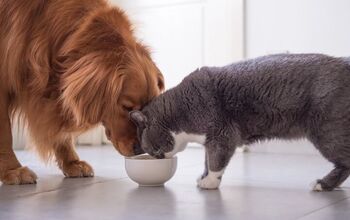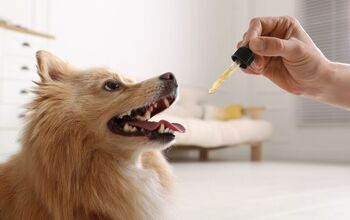New Study Reveals More About Cats’ Sense of Smell

Cat parents know that their kitties have a strong sense of smell. You might have watched your feline sniffing something, such as a spot on the floor or an item in your home, wondering what she could possibly be smelling there. Or, if you’ve ever tried adding something like a probiotic or enzyme supplement to her food, you might’ve seen her reject the entire meal because she picked up on the slightest odor.
Sure, you can learn a lot by observing your cat, but new research has revealed even more about your kitty’s sensitive nose, how it works, and how complex it is. Here’s a brief summary of what experts discovered when they took a closer look at the domestic cat’s nasal airway.
New Insights into How Cats Detect and Identify Smells So Quickly
Researchers relied on a 3D computer model of a cat’s nose that was able to show the way air moves into the nose and through its tightly coiled bony airway structures. They realized that, after a cat breathes in, the inhalation ends up as two streams of air, not one.
For the simulation, the experts didn’t use odorless air; they used air that smelled like cat food. Once inside the nose as two streams, they saw that one stream quickly went to an area known as the olfactory region for detecting smells right away. The other stream of air was filtered, cleansed, and humidified so it could go to the lungs. They were impressed with the speed of the system and compared it to a “ highly efficient coiled parallel gas chromatograph,” which, put simply, is a tool for detecting and separating chemicals in a vaporized sample.
You Can Use This Information to Keep Your Kitty Happy
With a better understanding of a cat’s nose and sense of smell, pet parents can make smarter decisions when it comes to caring for and interacting with their animals. For example, you might avoid the use of irritating fragrances throughout your home (e.g., scented litter, cleaning products, air fresheners), or you might use scent enrichment in addition to environmental enrichment so your kitty can have fun every day.
It will be interesting to see what else experts will uncover now that they’ve analyzed how a cat’s nose works in greater detail. In the meantime, remember, your cat uses her sense of smell to navigate her world – keeping that in mind will help you create a safe and happy home for your pet.

Lisa Selvaggio is a freelance writer and editor, and our resident cats-pert, with certifications in pet nutrition and pet first aid. She enjoys producing content that helps people understand animals better so they can give their pets a safe and happy home.
More by Lisa Selvaggio























